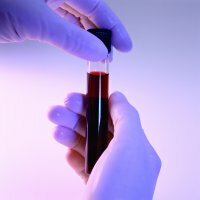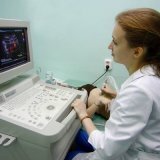Blood test for immunity

Immunogram( Immunoassay) is a study conducted to establish the basic parameters of the patient's immune system. Also with the help of this study, the patient's ability to resist different infections is identified. Most of the attention during the study is given to the percentage ratio and the number of both leukocytes and other blood cells. Also, an important role is played by the functional capacity of these cells.
For the procedure of the immunogram in most cases, blood is used, which is taken in one of two ways. In the first of them, blood is taken from the finger, in the second - from the vein. After that, the blood is distributed in two test tubes. Immediately after placement in a test tube, blood coagulates( folds).Further in vitro, the blood is divided into a transparent blood serum, which, in fact, contains the molecules needed for the analysis of the molecule, and a clot containing the uniform cells. Another tube contains a substance that prevents coagulation( anticoagulant), which allows you to store the desired cells in the form of a suspension. If the doctor is interested in the immune system of the mucous membranes, then the examination uses saliva, mucus from the nasopharynx or tear fluid. In the case of examination of the immunity of the nervous system, a spinal fluid( cerebrospinal fluid) is used, but this happens only in certain cases.
Indications for conducting blood test for immunity
- Frequent pneumonia
- Autoimmune diseases such as diabetes mellitus, etc.
- HIV infection
- Diseases of oncological nature
- Cutaneous pustular pathology
- Examination after organ transplantation surgery
- Secondary and primary immunodeficiencies, thenThere is an incorrect functioning of the body's defense system
- Diseases of the gastrointestinal tract of an infectious origin, in which weight loss is observed
- Inflammatory chronic pathologies such as sinusitis, bronchitis, etc.
- Allergic reactions
- After chemotherapy
- Fungal long-term infections
- Diseases of viral etiology
Indications for conduction during pregnancy
- HIV infection
- Pathologies of autoimmune nature
- Frequent recurrences of herpes simplex virus
- Pregnancy withA rhesus conflict, that is, a positive Rhesus in the child and a negative in the mother
- Pathology of tissue interaction during pregnancy( at this time suckingexist two organisms with different immune systems - the body of the child and the mother's body)
- incessant recurrence of CMV infection
Contraindications to
- aggravation of communicable diseases
- menstruation period
- exacerbation of inflammatory diseases
How to decipher immunogram?
It is highly unlikely that an immunogram could be deciphered by a person who did not study it specifically, since its encryption is a long list of abbreviations understood only by the specialist, to which different numbers correspond. Interpretation of the immunogram is handled by such an expert as an immunologist. He reads the immunogram, comparing all the indicators, first of all, with the area of their fluctuations during normal functioning of the immune system. These norms are established as a result of processing a large number of information obtained in specially conducted immunological studies, in which many healthy people participate.
If the specialist sees that most of the indicators are normal except for one or more, then the procedure of the immunogram is repeated again after 1.5-3 weeks. If there is a decrease in functional activity and the level of phagocytes, then we can conclude that there is a suppuration process. If there is a defect in T-lymphocytes, then most likely you can diagnose AIDS.When deciphering the results, a specialist can also reveal elevated indicators, not just low ones. For example, the excess of the norm of the number of immunoglobulins of the IgE class indicates the presence of helminthic invasions or allergic reactions, an increased level of leukocyte counts - acute infection or inflammation. Most often, the level of lymphocytes grows with viral infections.



